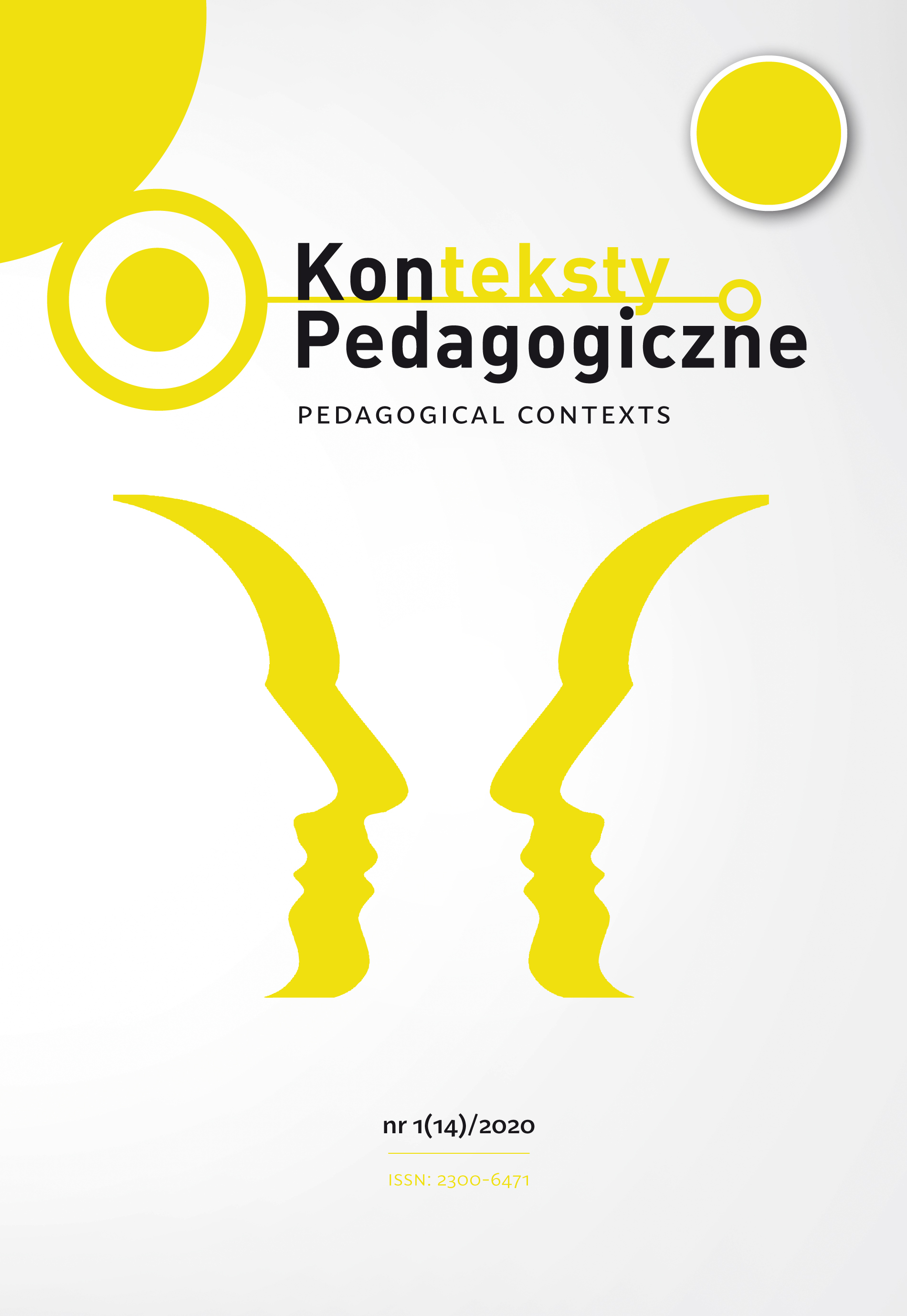Abstract
The multifactorial dynamic pathways theory of stuttering implies an individual combination of complementary factors that may be the cause of this speech disorder. These factors include physiological, linguistic, psychological and environmental ones. The last two are focused on the child’s emotions which are associated with their speech ability and other people reactions to it. Research shows that parents cannot cause the stutter, but quite the opposite, they can be part of a solution to their child’s problem. Because of the increased anxiety associated with speech disfluency, a stutter can affect interaction between the child and their parents. The paper presents the level of parental anxiety because of their preschool child’s stuttering symptoms. The results are broken down by the children’s age and presented in comparison with the type of speech disfluency.
References
Allen, J.L. & Rapee, R.M. (2005). Anxiety disorders. In: P. Graham (ed.), Cognitive Behaviour Therapy for Children and Families, vol. 1 (pp. 300–319). Cambridge: Cambridge University Press.
Biggart, A., Cook, F.M. & Fry, J. (2006). The Role of Parents in Stuttering Treatment from a Cognitive Behavioural Perspective. In: J. Au-Yeung & M. Leahy (eds.), Pro¬ceedings of the Fifth World Congress on Fluency Disorders, Dublin, Ireland, 25–28th July 2006 (pp. 268–375). International Fluency Association.
Conture, E. (2001). Stuttering. Its Nature, Diagnosis and Treatment. Boston, MA: Allyn and Bacon.
Douglas, J. (2005). Behavioural Approaches to Eating and Sleeping Problems in Chil¬dren. In: P. Graham (ed.), Cognitive Behaviour Therapy for Children and Families (pp. 187–206). Cambridge: Cambridge University Press.
Felsenfeld, S. (1997). Epidemiology and Genetics of Stuttering. In: R. Curlee & G.M. Sie¬gel (eds.), Nature and Treatment of Stuttering. New Directions, vol. 1 (pp. 3–22). Boston, MA: Allyn and Bacon.
Guitar, B., Kopf-Schaefer, H.K., Donahue-Kilburg, G. & Bond, L. (1992). Parental Verbal Interactions and Speech Rate. A Case Study in Stuttering. Journal of Speech and Hearing Research, 35, 742–754.
Guitar, B. & Marchinkoski, L. (2001). Influence of Mothers Slower Speech on their Children’s Speech Rate. Journal of Speech and Hearing Research, 44, 853–861.
Guitar, B. (2006). Stuttering. An Integrated Approach to its Nature and Treatment. Phila¬delphia, PA: Lippincott Williams and Wilkins.
Kelman, E. & Nicholas, A. (2013). Praktyczna interwencja w jąkaniu wczesnodziecięcym [Practical Intervention in Early Childhood Stuttering], transl. M. Kądzioła. Gdańsk: Harmonia Universalis.
Kloth, S.A.M., Janssen, P., Kraaimaat, F.W. & Brutten, G.J. (1995). Communicative Behavior of Mothers of Stuttering and Nonstuttering High-Risk Children Prior to the Onset of Stuttering. Journal of Fluency Disorders, 20(4), 365–377.
Kloth, S.A.M., Janssen, P., Kraaimaat, F. & Brutten, G.J. (1998). Child and Mother Variables in the Development of Stuttering among High-Risk Children. Journal of Fluency Disorders, 24, 253–256.
Meyers, S.C. & Freeman, F.J. (1985a). Mother and Child Speech Rates as a Variable in Stuttering and Disfluency. Journal of Speech and Hearing Research, 28, 436–444.
Meyers, S.C. & Freeman, F.J. (1985b). Interruptions as a Variable in Stuttering and Disfluency. Journal of Speech and Hearing Research, 28, 428–435.
Miles, S. & Ratner, N.B. (2001). Parental Language Input to Children at Stuttering Onset. Journal of Speech, Language and Hearing Research, 44, 1116–1130.
Newman, L.L. & Smit, A.B. (1989). Some Effects of Variations in Response Time Latency on Speech Rate, Interruptions, and Fluency in Children’s Speech. Journal of Speech and Hearing Research, 32, 635–644.
Plopa, M. (2011). Psychologia rodziny: teoria i badania [Family Psychology: Theory and Research]. Kraków: Oficyna Wydawnicza Impuls.
Riley, G.D. & Riley, J. (1979). A Component Model for Diagnosing and Treating Children who Stutter. Journal of Fluency Disorders, 4, 279–293.
Rustin, L., Botterill, W. & Kelman, E. (1996). Assessment and Therapy for Young Fluent Children. Family Interaction. London: Whurr Publishers.
Smith, A. & Kelly, E. (1997). Stuttering. A Dynamic, Multifactoral Model. In: R. Curlee & G.M. Siegel (eds.), Nature and Treatment of Stuttering. New Directions (pp. 204– 217). Boston, MA: Allyn and Bacon.
Tarkowski, Z. (1992). Jąkanie wczesnodziecięce [Early Childhood Stuttering]. Warszawa: Wydawnictwa Szkolne i Pedagogiczne.
Vanryckeghem, M., Brutten, G.J. & Hernandez, L.M. (2005). A Comparative Inves¬tigation of the Speech-Associated Attitude of Preschool and Kindergarten Children who Do and Do Not Stutter. Journal of Fluency Disorders, 30, 307–318.
Wall, M.J. & Myers, F. (1995). Clinical Management of Childhood Stuttering. Austin, TX: Pro-ed.
Węsierska, K. & Jeziorczak, B. (2011). Czy moje dziecko się jąka? Przewodnik dla rodzi¬ców małych dzieci, które mają problem z płynnym mówieniem [Is my Child Stuttering? A Guide for Parents of Young Children who Have Problems Speaking Fluently]. Katowice: Centrum Logopedyczne.
Winslow, M. & Guitar, B. (1994). The Effects of Structured Turn Taking on Disfluen¬cies. A Case Study. Language, Speech and Hearing Services in Schools, 25, 251–257.
Yairi, E. & Ambrose, N. (2005). Early Childhood Stuttering. For Clinicians by Clinicians. Austin, TX: Pro-ed.
Zenner, A.A., Ritterman, S.I., Bowen, S. & Gronhord, K.D. (1978). Measurement and Comparison of Anxiety Levels of Parents of Stuttering, Articulatory Defective and Non-Stuttering Children. Journal of Fluency Disorders, 3, 273–283.
In accordance with the recommendation of the Ministry of Science and Higher Education, which aims to counteract the practice of “ghostwriting” and “guest authorship,” all authors submitting their text for publication should attach an author’s statement which declares the contribution of each of the authors to the article. The printed and signed statement should be delivered by mail or other means to editor-in-chief Joanna Skibska or sent in the form of a scan to the following e-mail address: redakcja@kontekstypedagogczne.pl. The authors will not receive remuneration for publishing their papers. The editors reserve the right to make minor editorial changes to the articles which will not affect the substance of the article. We encourage all authors to prepare their articles in accordance with the guidelines for manuscript preparation. Download pdf file.
Authors transfer all copyrights and grant the journal the right of first publication with the work simultaneously licensed under a Creative Commons Attribution License that allows others to share the work with acknowledgement of the work's authorship and initial publication in this journal. All authors agree to the publishing of their email addresses, affiliations and short bio statements with their articles during the submission process.

